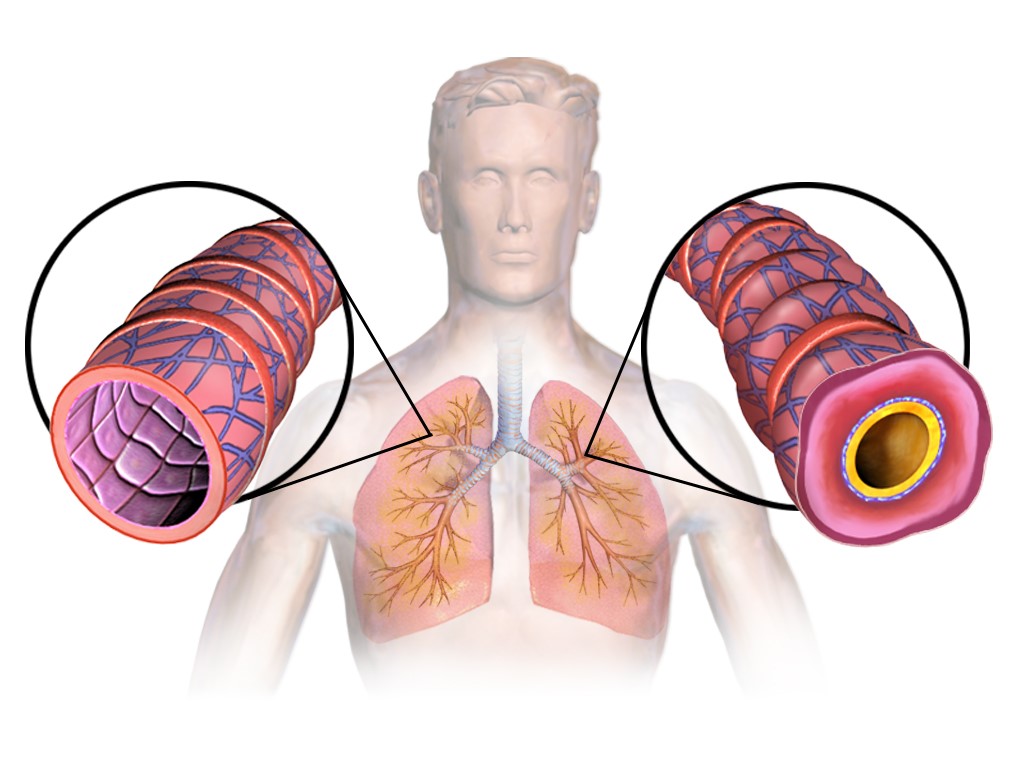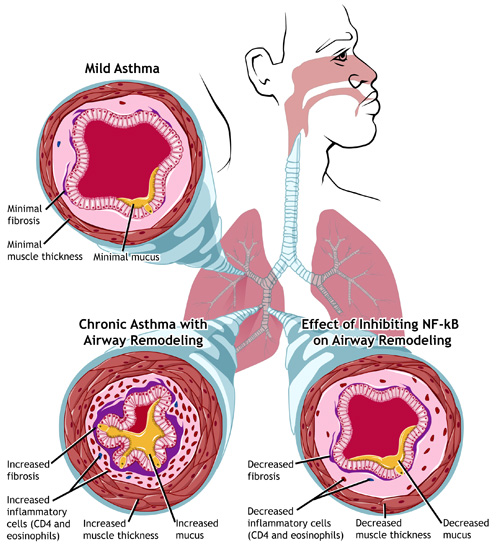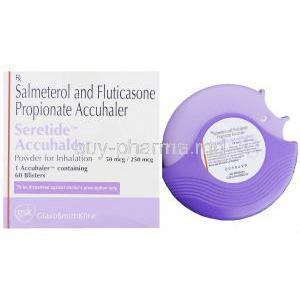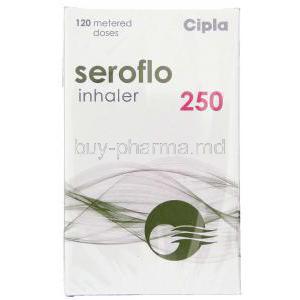Theophylline
- Introduction
- Composition of Theophylline
- How Theophylline Works
- Uses of Theophylline
- Off-Label Uses of Theophylline
- Dosage and Administration of Theophylline
- Theophylline Interactions
- Side Effects of Theophylline
- Specific Administration Considerations
- Contraindications and Warnings for Theophylline Use
- Overdosage and Management
- Careful Administration of Theophylline
- Storage and Handling Precautions of Theophylline
- Important Precautions
- Understanding Theophylline better
Introduction
Brief History of Theophylline
Historically speaking, Theophylline falls under the category of methylxanthines and dates back to 1888, when it was isolated from tea leaves for the first time(1). Initially employed for managing asthma due to its ability to widen bronchial passages and promote respiratory drive stimulation (2)– nowadays – Theophylline is utilized for various respiratory conditions such as chronic obstructive pulmonary disease (COPD) and apnea of prematurity. Nevertheless, advancements resulting in fewer adverse reactions have led to reduced utilization within the medical field; however – noteworthy is that Theophylline maintains relevance within specific clinical situations.
-
"Theophylline - An overview | ScienceDirect Topics." ScienceDirect. Available at: link
-
"Theophylline | DrugBank Online." DrugBank. Available at: link
Medical Importance and Relevance Today
Theophylline retains its value as a therapeutic agent in today's medical field. However, it is no longer the go-to treatment for conditions like asthma because safer alternatives have emerged. Theophylline still plays a vital role in managing specific respiratory disorders. It benefits patients with severe COPD and individuals who do not respond well to standard treatments. Moreover, it is a cost-effective option for respiratory diseases in numerous low-income countries. Additionally, ongoing research is actively investigating the potential uses of theophylline in neuroprotection and anti-inflammatory therapy areas.

Asthma Lungs
Composition of Theophylline
Chemical Structure and Properties
Theophylline is a naturally occurring alkaloid, chemically known as 1,3 dimethylxanthine. It is a white crystalline substance with the molecular formula C7H8N4O2. Structurally theophylline consists of a xanthine core, essentially a purine base with two keto groups and two imine groups. Theophylline possesses key characteristics such as low molecular weight, high water solubility, and acidic solid properties. Moreover, its ability to easily cross cell membranes allows it to achieve high intracellular concentrations, which plays a significant role in its pharmacological actions.
Manufacturing Process
Theophylline production typically involves a series of chemical reactions that begin with xanthine. The first step in this process is the alkylation of xanthine, which yields theophylline. The exact process and conditions used can vary depending on manufacturers' specific techniques. However, standard steps in this production include redox reactions, temperature manipulations, and crystallizations. It is worth noting that strict quality control measures are necessary during the production of theophylline to guarantee the purity and safety of the final product.
How Theophylline Works
Mechanism of Action in the Body
The primary way that Theophylline works is by inhibiting phosphodiesterase (PDE) enzymes, which are not selective(1). This inhibition causes an increase in levels of cyclic adenosine monophosphate (cAMP) and cyclic guanosine monophosphate (cGMP) within the cells. This increase leads to the relaxation of smooth muscles. Particularly in the bronchial tubes. Resulting in a decrease in airway resistance for the patient.
Additionally, theophylline reduces the sensitivity of the airways to potential triggers that could cause bronchoconstriction. It also acts to block adenosine receptors providing other bronchodilatory effects.
Pharmacodynamics and Pharmacokinetics
The effects of theophylline can be observed within one to two hours after taking it orally. It reaches its peak levels in about two hours. It has various effects on the respiratory system, including bronchodilation, increased contractility of the diaphragmatic muscles and decreased resistance in the pulmonary blood vessels. In terms of absorption and distribution in the body theophylline is well absorbed in the gastrointestinal tract and widely distributed throughout the body. Its half life can vary from 3 to 9 hours in adults but may be influenced by factors such as age, liver disease, and concurrent use of other medications. The liver plays a significant role in metabolizing theophylline through cytochrome P450 enzymes and it is eliminated from the body through urine excretion.
Uses of Theophylline
Approved Uses in Medical Practice
The therapeutic value of theophylline goes beyond its capacity to dilate the bronchi and encompasses numerous aspects of respiratory disease management. In this context, we provide an overview of its primary approved applications in clinical practice.(1)
1. "Theophylline: A Forgotten Drug in Pediatrics?" U.S. National Library of Medicine. Available at: link

Asthma Mild and Chronic
Asthma Treatment
Since its early discovery, Theophylline has played a significant role in managing asthma. Its ability to relax the bronchial muscles and increase diaphragmatic strength relieves bothersome symptoms like breathlessness and wheezing. Although it is not typically prescribed as an initial therapy these days due to more advanced and safer alternatives. Theophylline remains an invaluable option for individuals who do not experience satisfactory results with standard treatments.
Chronic Obstructive Pulmonary Disease (COPD)
Theophylline has been found to help treat COPD, a respiratory condition that causes long-term breathing problems and restricted airflow. It can help improve lung function and decrease symptoms by acting as a bronchodilator. Theophyllines' anti-inflammatory properties may also help reduce inflammation in individuals with COPD. It offers further advantages beyond just opening up the airways.
Therapeutic Benefits and Efficacy
The therapeutic benefits of theophylline go beyond just bronchodilation. Its effectiveness in managing respiratory diseases is well established. Some of its many benefits include
- Inducing bronchodilation.
- Improving airflow in the lungs.
- Reducing the frequency and severity of asthma and COPD episodes.
- Enhancing respiratory muscle function by improving diaphragm contractility.
- Reduce inflammation in the lungs, which is particularly helpful for diseases characterized by chronic inflammation such as COPD.
It is important to be aware that while theophylline has these positive effects, there is also a possibility of adverse effects and drug interactions. Therefore. It is crucial to carefully monitor blood theophylline levels and patient status to optimize its therapeutic benefits.
Off-Label Uses of Theophylline
Uncommon but Effective Applications
The usefulness of theophylline extends beyond its usual applications in respiratory disorders. In fact, over the years various off-label uses have emerged, backed by clinical findings and pharmacological reasoning. One notable off-label use of theophylline is its potential as a neuroprotective agent by inhibiting adenosine receptors. Theophylline could potentially slow down processes that damage neurons. Early studies suggest potential advantages for conditions like Alzheimer's and Parkinsons' disease, but further research is needed. Another off-label use is in managing sleep apnea, especially in newborns. Theophyllines' ability to stimulate the respiratory center in the brain can help alleviate episodes of paused breathing during sleep, offering potential benefits for patients with sleep-disordered breathing.
Scientific Evidence Supporting Off-Label Uses
While off-label uses of Theophylline may not be recognized as a standard medical practice, compelling scientific evidence supports their potential applications.
- Research conducted on animals and in vitro demonstrates that Theophylline may hold promise for neuroprotection by inhibiting adenosine receptors and possibly exhibiting anti-inflammatory effects. Nevertheless, large-scale human trials must be carried out for confirmation In addressing sleep apnea.
- Numerous clinical trials have successfully shown Theophylline's effectiveness in reducing apnea episodes. This benefit proves particularly advantageous for neonates with prematurity-related apnea; however, careful monitoring becomes indispensable due to potential side effects.
These intriguing off-label uses offer valuable insights into Theophylline's diverse capabilities; nevertheless. As always, further studies are needed to unlock its true potential in these areas. Striking a balance between benefits and risks remains essential for optimizing patient care.
Dosage and Administration of Theophylline
Standard Dosing Guidelines
The optimal amount of theophylline can differ significantly depending on factors like an individual's age. The severity of their disease. And any other existing health conditions. (1) Typically, adults may begin with a daily dose of 300 to 600 mg, but this can be modified based on how they respond to the medication and the levels of theophylline in their blood. In the case of children. The dosage is usually adjusted based on their weight.
1. Theophylline Dosage Guide with Precautions - Drugs.com. Drugs.com. Available at: link
Dosing Variations based on Specific Conditions
Adjustments to the standard dosing regimen may be necessary when managing specific conditions. Severe cases of asthma or COPD, for example may require a higher dose for effective treatment. On the other hand, patients with liver disease or the elderly often need a reduced dosage to avoid harmful drug buildup and potential toxicity.
Methods of Administration
Theophylline is commonly given orally in tablets, capsules, or liquid preparation. You can also find extended-release versions usually taken once or twice daily. It is crucial to mention that it's important to take theophylline consistently. Whether with food or not. To ensure it is absorbed steadily.
Theophylline Interactions
Drug-Drug Interactions
Theophylline possesses a significant likelihood of drug interactions, for instance. Medications like erythromycin, cimetidine, and fluoroquinolone antibiotics can hinder the metabolism of theophylline. This inhibition can elevate the levels of theophylline in the bloodstream, raising the risk of experiencing side effects. Conversely, drugs such as phenytoin and rifampin can potentially expedite theophylline's metabolism, potentially reducing its effectiveness. Thus. It is imperative to perform a comprehensive medication review before initiating theophylline therapy.
Drug-Food Interactions
Although theophylline can be consumed with or without food, its absorption and metabolism can be influenced by certain dietary factors, for instance. High-protein diets have the potential to enhance theophylline clearance. On the other hand, the consumption of caffeine or alcohol can impact the effectiveness of this medication. Hence healthcare providers must advise patients accordingly regarding these potential interactions.
How to Manage Potential Interactions
To manage theophylline interactions effectively. It is necessary to engage in thorough therapeutic monitoring. This includes regularly measuring serum theophylline levels, particularly when starting or stopping medications that interact with it. It is also important to educate patients about possible food interactions and encourage them to maintain a consistent diet.
Side Effects of Theophylline
Most Common Side Effects
Theophylline, like all medications. It has the potential to induce side effects. However, it is noteworthy that the severity and frequency of these side effects may differ. Among the most frequently reported side effects associated with theophylline are
- Nausea
- Vomiting
- Headache
- Insomnia
- Increased heart rate
Rare but Serious Side Effects
While uncommon. Theophylline has the potential to result in significant adverse effects. These may encompass
- Seizures
- Irregular heart rhythms
- Allergic reactions such as skin rash or swelling.
How to Manage and Mitigate Side Effects
The management of theophylline's side effects primarily revolves around making adjustments to the dosage, ensuring a gradual increase in the drug's administration, and consistently monitoring the levels of theophylline in the bloodstream. In cases where symptoms are less severe. Such as nausea, consuming the drug alongside a meal might prove beneficial. However, when serious side effects arise, seeking immediate medical attention and potentially discontinuing medication use is imperative.
Specific Administration Considerations
Administration to Elderly Patients
Diminished drug metabolism is often observed as individuals age, which increases vulnerability towards elevated drug concentrations and subsequent side effects. In cases involving elderly patients prescribed with theophylline, it is commonly advised that they be administered reduced dosages while ensuring regular monitoring of their serum theophylline levels remains paramount to avoid any possible toxic ramifications.
Administration to Pregnant Women and Nursing Mothers
Given Theophylline's capacity to cross both placenta barriers and enter the breast milk supply. A cautious approach should be taken when administering this medication to pregnant or lactating women due to potential concerns. Despite the lack of definitive links between Theophylline and birth defects, assessing the risk-benefit ratio before utilizing it during pregnancy is recommended. For nursing mothers, Theophylline has been known to have the ability to induce irritability or other signs suggesting mild toxicity in the breastfed infants. Therefore. Vigilant monitoring for any such indications should be exercised accordingly.
Administration to Children
To manage cases of neonatal apnea, Theophylline finds significant utilization in pediatric patients. In situations involving children, adjusting the dosage based on their body weight becomes essential while also ensuring careful monitoring due to both probable toxicity concerns and fluctuating levels of metabolic activity associated with Theophylline intake among youngsters.
Contraindications and Warnings for Theophylline Use
Patient Populations at Risk
Certain individuals may be more susceptible to experiencing adverse effects from theophylline. These individuals include patients with specific health conditions, such as uncontrolled seizure disorders, certain types of heart disease, liver disease, and thyroid disorders. Therefore it is crucial to exercise caution when using theophylline in these patients or even consider avoiding its use entirely.
Conditions where Theophylline should be Avoided
Patients with hypersensitivity to theophylline or other components in the formulation should refrain from taking Theophylline. Furthermore, avoiding Theophylline in patients with certain types of acute heart conditions is advised as it may worsen these conditions.
Warnings and Special Precautions
Administering theophylline requires extra precautions due to its narrow therapeutic index and the possibility of significant side effects. To ensure safety. Monitoring serum theophylline levels regularly is crucial, especially in patients with conditions or taking medications that may impact theophylline metabolism. Moreover, it is advisable to inform patients about the signs of toxicity and instruct them to seek medical attention if these signs manifest promptly.
Overdosage and Management
Signs and Symptoms of Theophylline Overdose
Theophylline overdose can have serious consequences that may even put ones life at risk. Some warning signs and symptoms to watch out for include feelings of
- Nausea
- Vomiting
- Abdominal pain
- Insomnia and restlessness
- Seizures can occur as a result of the overdose
- Irregular heart rhythms
- Shock and cardiac arrest become possibilities that cannot be ignored.
Immediate Steps and Medical Interventions
If there is reason to believe that an individual has overdosed on theophylline. They must receive prompt medical attention. The initial approach usually entails ceasing the administration of the drug providing support measures and closely monitoring the condition. Specific medications are employed to address seizures and abnormal heart rhythms. It may be necessary for the individual to be admitted to a hospital and receive intensive care in some instances. Additionally, methods aimed at reducing the absorption of the drug, such as activated charcoal, may be utilized. The primary objective is to sustain essential bodily functions while eliminating the surplus drug from the system.
Careful Administration of Theophylline
Monitoring Patient Response
A careful examination of patient response is essential in determining how well theophylline treatment works. This involves evaluating symptom relief experienced by patients and monitoring any potential side effects they may encounter. Equally important is regular measurement of serum levels containing this medication; this helps ensure that concentrations remain within a therapeutic range allowing us to optimize its effectiveness while reducing concerns regarding toxicity complications.
Adherence to Dosage Instructions
Due to theophylline's narrow therapeutic index, it is important for patients to follow the prescribed dosage instructions strictly. Healthcare providers should educate their patients on the significance of taking the medication consistently and as directed if a dose is missed. It should be taken as soon as remembered unless it is almost time for the next dose. Doubling the dose to compensate for a missed one should be avoided, as this may raise the potential for harmful side effects.
Potential Adjustments over Treatment Course
During treatment. It may be necessary to change the dosage based on how the patient responds to it and the levels of theophylline in their blood. Adjustments may also be needed if there are any changes in the patient's health, if they start or stop taking other medications or if there are changes in their diet. It is essential to approach these adjustments carefully and with guidance from a healthcare professional.
Storage and Handling Precautions of Theophylline
Optimal Storage Conditions
Responsible storage of Theophylline demands our attention. To maintain its integrity. This medication must be stored within a certain temperature range of approximately 20°C to 25°C (68°F 77°F). Safeguarding against degradation caused by exposure requires adequate protection from both light and moisture; thus keeping it enclosed within its original container and ensuring the lid is securely closed are essential precautions. Locations prone to high humidity, such as bathrooms or spots subjecting the medicine to elevated temperatures, are unsuitable for storing Theophylline.
Safety Measures for Handling
It is imperative to prioritize safety when dealing with theophylline. It is recommended to thoroughly wash your hands prior to and after handling this medication. It is also vital to avoid any direct contact with the skin or eyes, particularly when it comes to the liquid or powder forms of theophylline. In the event of any spills, it is crucial to clean them up immediately.
Important Precautions
Safety First: Precautions for All Patients
When using theophylline. It is imperative to prioritize certain precautions for all patients. Patients must undergo regular medical follow-ups. Strictly adhere to dosage instructions. And promptly report any side effects they may experience. Additionally, patients need to ensure that their healthcare providers are provided with a comprehensive medication history, including details about over-the-counter medications and dietary supplements, in order to prevent any potential drug interactions.
Double-Checking: Ensuring Safe Use of Theophylline
To ensure the safe use of theophylline, it is essential for healthcare providers to thoroughly review all pertinent patient information before starting treatment. This includes factors such as patient age, overall health, and any other medications being taken concurrently. Patients must receive proper counseling about the potential signs and symptoms of toxicity associated with theophylline. Suppose any of these indications arise. Patients should promptly seek medical attention. Furthermore, it is important for patients to understand that sharing their medication with others is not recommended due to significant variations in the correct dosage of theophylline among individuals.
Understanding Theophylline better
Summary of Theophylline's Role in Medicine
Theophylline has proven itself as a strong tool in managing respiratory disorders such as asthma and chronic obstructive pulmonary disease from its early days in medicine by opening airways and reducing inflammation in individuals battling these persistent conditions. It boosts lung function through its unique mechanism of action. Furthermore, its usage surpasses conventional applications by being employed off-label across various clinical scenarios. Nevertheless, it should not be overlooked that reaping benefits from theophylline does not come without hazards. Optimizing therapeutic efficacy while minimizing toxicity demands meticulous attention given to dosage amounts and patient attributes like concomitant medications or adherence to prescribed regimens. Additional care must be taken when prescribing this medication for specific populations like elderly individuals or pregnant women due to the potential risks involved. When weighing potential harms against advantages for such groups (including nursing mothers or children), prudent decision-making focused on achieving optimal therapeutic outcomes becomes paramount.





















